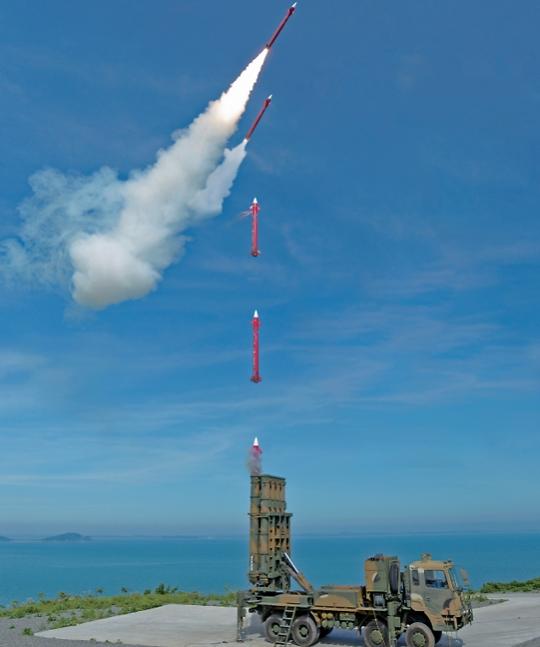
[Courtesy of ADD]
Cheongung-II passed ballistic missile and aircraft intercept tests on August 18 to certify quality for mass production, according to the Defense Agency for Technology and Quality. It is the improved version of Cheongung-I guided missiles and features the function of intercepting ballistic missiles. The Cheongung-II system can be launched aboard frigates in a naval role.
"The quality certification shooting test completely demonstrates the capability of Cheongung-II to intercept both ballistic missiles and aircraft," said Ko Hee-myung, an official in charge of missile defense at the Defense Acquisition Program Administration (DAPA), a state body controlled by the defense ministry. Ko said that South Korea is now able to produce guided weapons with superior performance and technological competitiveness.
The development of Cheongung involved companies such as LIG Nex1, Doosan DST, Kia Motors, and Hanwha Group units. Cheongung with hit-to-kill technology is a surface-to-air missile (SAM) system developed with technical support from Russia's Almaz Antey to replace U.S.-made Hawk batteries which had been in service since 1964. Almaz Antey has created a Russian version called the S-350 Vityaz missile system.
Deliveries of the Cheongung Block-1 system have been completed. In July 2021, South Korea retired its last MIM-23 Hawk system. A complete Cheongung battery consists of at least four transporter erector launchers (TELs), an X-band multi-function phased array 3D radar and a fire command vehicle.
In June 2021, LIG Nex1 opened a dedicated assembly and inspection center for an upper-tier interceptor called "L-SAM" which is slated to be ready in 2024. The L-SAM system, based on the Russian S-400 technology, offers capabilities similar to that of the Terminal High Altitude Area Defense (THAAD) system, an advanced U.S. missile shield deployed in South Korea.
Copyright ⓒ Aju Press All rights reserved.




View more comments